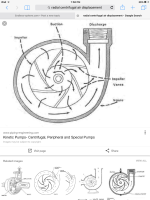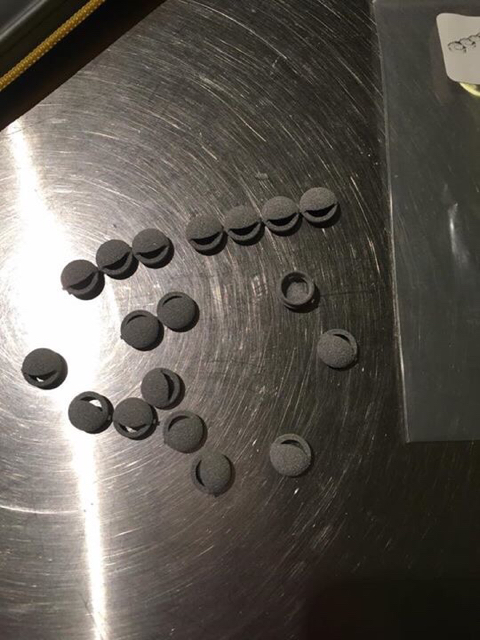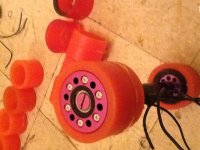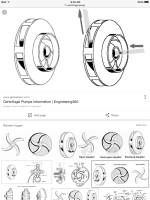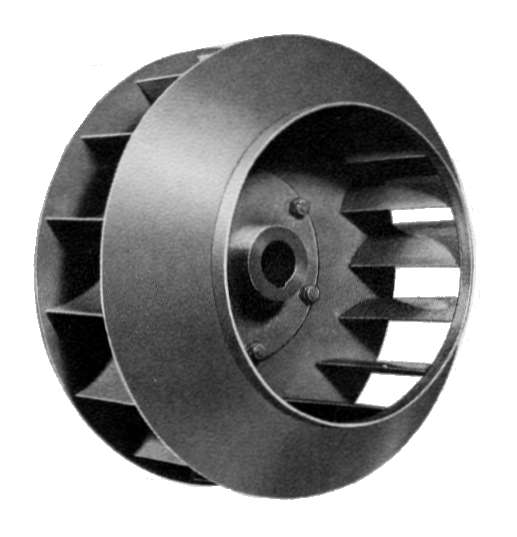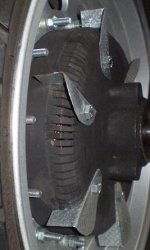Hummina Shadeeba
1 MW
I want to get the best air cooling possible from a small part I'm going to get made(3D print or later pour in plastic) that I'll glue on the outside flange of my skateboard hub motor. It is always rotating with 6 holes and the motors get hot and the holes are very under utilized.
I liked the air scoop design below and was going to get that printed but then now for differnet reasons the other design using centrifugal force to throw the air out instead of scooping it I. seems a better idea. The scoops can only work at the 3 to 9 o'clock upward position but the other design the blades could be shaped to eliminate the pressure in those upward positions. Does this throwing of air instead of scooping method of cooling work best on a moving wheel?
There are other holes on the backside of the motor as well
I liked the air scoop design below and was going to get that printed but then now for differnet reasons the other design using centrifugal force to throw the air out instead of scooping it I. seems a better idea. The scoops can only work at the 3 to 9 o'clock upward position but the other design the blades could be shaped to eliminate the pressure in those upward positions. Does this throwing of air instead of scooping method of cooling work best on a moving wheel?
There are other holes on the backside of the motor as well



